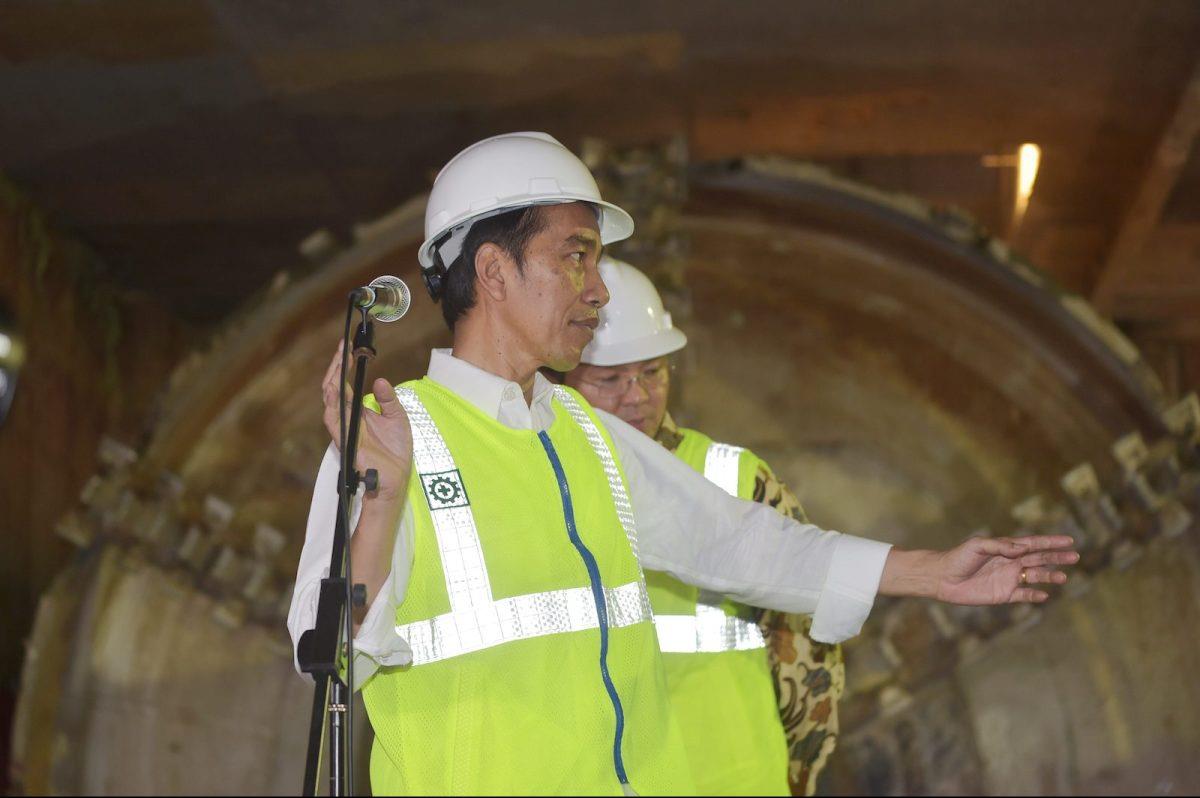
Slow Motion On Widodo's Go-Go Infrastructure Drive
Critics say that may now be coming back to haunt him, setting back start-up dates for Jakarta's Light Rail Transit (LRT) system and the US$8 billion China-funded Jakarta-Bandung Fast Rail project, which is now three years behind schedule and $2 billion over cost.
Both had been finally scheduled to go into service on Independence Day, August 17, but that is unlikely to happen either because of continuing technical problems and difficulties resolving access to stations.
The president has been uncharacteristically patient about the LRT, noting that it is Indonesia's first homegrown infrastructure undertaking and that there is no need to rush its opening, particularly if safety aspects must be addressed for the 137,000 commuters who are expected to the service each day.
But for much of the past nine years, the need for speed has always been the priority for a leader intent on adding to his already impressive legacy as the“Infrastructure President.”
“I agree with the principle of what he is doing,” says a former senior government official.“But the problem has always been the implementation.”
Others in the business community have a harsher view:“It's all being done in a hurry without any planning or proper management,” says an Indonesian consultant who requested anonymity.“He wants to leave a legacy, but things may turn out to be very different from what he had in mind.”
Blame for the LRT delays falls squarely on PT Industri Kerta Api (INKA), which manufactures the rolling stock, the collective term for trains and carriages, and construction company PT Adhi Karya, two of the state-owned companies Widodo has relied on to spearhead his infrastructure program.
Known for their inefficiency, poor management and corrupt practices, SOEs were nevertheless chosen ahead of private sector firms because they dispensed with time-consuming tendering processes and supposedly got on with the job.

An LRT Jabodebek train. Photo: PT KAI

state polls highlight anwar government weakness

us-israel relations plumb lowest level in decades

huawei's q2 results defy us sanctions
That has often not been the case, most glaringly with the 43-kilometer-long Jabodebek LRT, three lines which will bring commuters into the city center from the populous dormitory suburbs of Bogor, Depok and Bekasi in the Great Jakarta area.
INKA officials have struggled to explain why there is a lack of conformity in the specifications for the automated system's 31 driverless trains, which has meant that many have different speed and braking mechanisms.
That, in turn, has required software adjustments by German technology powerhouse Siemens to ensure, among other things, that trains stop at the right place so the doors connect with station gates.
Adhi Karya has had to deal with the consequences of an overly sharp curve on one section of the elevated track close to the heart of the Jakarta business district that forces trains to reduce speed from 50-60 to 20 kilometers per hour.
Although media reports blamed poor design and a breakdown in communication between Adhi Karya and other firms, rail experts say glitches are often inevitable in crowded cities where space is at a premium.
Adhi Karya has been one of the main subcontractors for the first and now second phase of the Mass Rapid Transit (MRT), a partly operational heavy rail system which will eventually connect the northern and southern ends of Jakarta.
Opened in April 2019, the MRT's 16-kilometer first phase currently carries an average of 80,000 passengers a day and has transformed the face of the city center with the extensive commercial enterprises that have sprung up around it.
Transport specialists say playing a supporting role in a Japanese-funded project, even the second phase with its difficult challenges presented by a canal and a shallow water table, is very different from managing any engineering venture in its entirety.
While Jakarta already has a suburban train service, the well-run MRT has been its first venture into modern mass transit. The LRT will complement that and may well have an impact on the city's love affair with the motorcycle.
Launched in 2015, the LRT was originally expected to be in operation by 2019, already an ambitious target, but necessary changes in the signaling system and inevitable land acquisition issues led to delays and cost overruns.
In fact, a lack of land for a depot led to an incident in October 2021 when a train on a test run smashed into the back of a line of parked trains which had been placed in storage on one side of the newly completed twin-track.
That prompted another adjustment to the automated control system. The ensuing Covid-19 pandemic caused further setbacks, as it did with many of Widodo's cherished infrastructure projects.
Among those is the $33 billion new capital in East Kalimantan, where the president hopes to celebrate the 79th
anniversary of Indonesia's independence, albeit with only the new palace and some key government buildings to show.
China was awarded the 142-kilometer fast rail project in September 2015, much to the chagrin of Japan, which had done most of the feasibility work and was widely favored to get the nod.
But the government said China was preferred because it did not require an official loan guarantee, nor any funding from the Indonesian government. But in the end, it came down to how fast it could be completed.
Foreign policy experts were critical of the way the then-new Widodo government and then-state enterprise minister Rini Soemarno pitted China against Japan, which has been a major investor in Indonesia for decades.
Chief Maritime Affairs Minister Luhut Panjaitan, who Widodo placed in charge of the venture, said at the time that Japan took too long on projects, noting as a comparative example that China could construct a nickel smelter in only 18 months.
But problems dogged the rail project from the start, most notably land acquisition which has proved a major obstacle to many public projects – even since passage of the 2012 Property Law that applied the principle of eminent domain.
As much as Chinese President Xi Jinping complained to Widodo about the slow progress of a project under China's signature Belt and Road Initiative, the project wasn't going anywhere until developer PT Kereta Cepat Indonesia China (KCIC) acquired at least 210 hectares of prime industrial land.

Indonesian President Joko Widodo (second left) and China Railway Corp manager Sheng Guangzu (center) examine a high-speed-train model during a groundbreaking ceremony for the Jakarta-Bandung railway line in Walini, West Java province, on January 21, 2016. Photo: Agencies
Overall, the developer needed at least 550 ha, crucial not only to securing the
right of way for the track itself, but also for commercial and residential development to make the project financially viable.
With fares unable to cover costs, transit-orientated development (TOD) has been notably successful in building mass transit projects around the world that otherwise could not have survived without state subsidies.
Even now, there are worries the project will become a white elephant, with commuters often having to travel an hour or more to the stations on both ends of the line, which tends to negate the fast-rail concept.
Panjaitan has long acknowledged that fast-rail makes little sense unless it covers at least 300 kilometers, not the relatively short distance between Jakarta and Bandung where the gradient and several stops will prevent the train attaining the speeds that make fast-rail fast.
Extending the Jakarta-Bandung line is still part of the Transportation Ministry's long-term master plan, but it now wants to remove the separate Jakarta-Surabaya semi-fast-rail project from the list of National Strategic Projects (NSP), which only appears to have been proposed to placate the Japanese.
Like this:Like Loading... Related
Legal Disclaimer:
MENAFN provides the information “as is” without warranty of any kind. We do not accept any responsibility or liability for the accuracy, content, images, videos, licenses, completeness, legality, or reliability of the information contained in this article. If you have any complaints or copyright issues related to this article, kindly contact the provider above.






















Comments
No comment